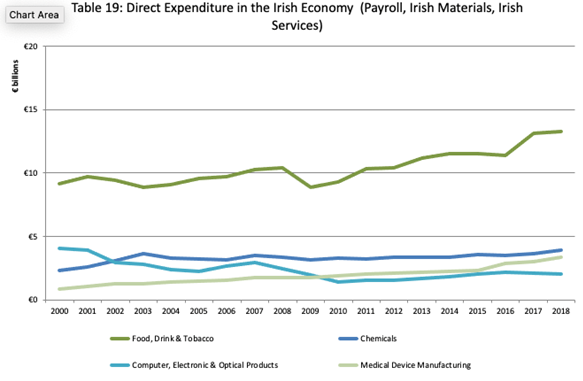The Supreme Court ruling quashing An Taisce’s attempts to block Glanbia building a new cheese plant in Co. Kilkenny is both balanced and unequivocal.
I would recommend to anybody who is interested in environmental impacts, climate challenges or Irish agricultural development to read, in depth, the Supreme Court decision.
I have certain bias in saying this in that I have supported the building of the plant, which at its core was a key response to Ireland’s post-Brexit challenge of managing the market diversification implications of our nearest and biggest export market no longer being part of the EU single market.
I would suggest nevertheless, that the expositions of the logic behind the decision to reject all of the challenges put forward by An Taisce represent a welcome restoration of balance and calmness to a topic that has quite frankly been hystericised and tribalised over the last two years.
Supreme Court ruling
The Supreme Court ruling, I would suggest, doubled down on the ruling of the High Court, that An Taisce could not use the courts to fight a battle lost in the political arena regarding government policy.
It further outlined why core elements of EU and national regulatory standards and legislated assessments of environmental impacts cannot be strained or misused by a special interest group, whose core stance is that it opposes government policy and its regulatory and planning structures.
In dismissing An Taisce’s clamour that planning and environmental impacts should also assess all upstream and downstream impacts of planning applications, it surely saved Ireland’s inward investment policy from unworkable constraints.
It also upheld the rights of the broad 300,000 citizens in the Irish agri-food sector to conduct their business as they have been doing within the constraints of what is a highly regulated, highly constrained regulatory structure.
The Supreme Court ruling, as with the United Nation’s COP26 process in Glasgow late last year and the Intergovernmental Panel on Climate Change (IPPC) report on climate change, represents a balanced and accessible assessment of where and how climate action challenges can be addressed.
Anti-agriculture
This calmer, systematic and holistic assessment of both climate challenges and Irish economy development imperatives, in my opinion, exposes again the narrowness of the small island anti-agriculture debate, that has masqueraded as Ireland’s climate narrative, over the last two years.
In particular, while not in any way diminishing the huge challenge of actually delivering measurable decarbonisation of modern economies, the measured tone creates a far better prospect of buy-in from all of the practitioners in the Irish agri sector.
A buy-in which is vital to the acceptance of the huge challenges of sectoral carbon budgets not just in agriculture, but in all of the other sectors where no real discussion or debate has taken place.
And yet, just when we perhaps thought that the Supreme Court ruling against An Taisce in the Kilkenny cheese plant case had slain all of the environmental lobby dragons, up they pop with a challenge in the High Court last week.
Further court challenges
An Taisce is now contesting the legitimacy of the Food Vision 2030 concept.
Quite frankly, there is probably as little chance of this legal challenge actually constraining either the Food Vision process or Irish agri-food development.
But the public noise characterising Ireland’s climate challenges as beginning and ending with cows will continue to attempt to inflict reputational damage on the agri sector.
The question for the agri sector becomes surely – how do we retain a focus on the real and numerous, multi-dimensional opportunities and challenges facing the sector?
These include:
- Rising demand for Ireland’s grass-based agri output;
- Rising input costs, zero food inflation;
- Post-Covid-19/Ukraine war global economy impacts;
- Decarbonisation costs and regulations;
- Environmental impacts including water quality of production methods;
- Sectoral carbon budgets/limits on cow numbers;
- Post-Brexit market diversification;
- Common Agricultural Policy reform, EU Green Deal.
Perhaps the best way of addressing this conundrum can be to continue to articulate and accentuate the Irish economy impact of the sector.
We need to highlight its ongoing relevance which is inextricably linked to Irish agriculture’s huge global reach and growing reputation for sustainable food production.
The chart below is from the Annual Survey of Irish Economy Expenditure published in April 2021 by the Department of Enterprise, Trade and Employment.

The figures shown are for 2019, hopefully next month will see an update.
Most critically, what the chart shows is that spending in the Irish economy by the food and drink sector is five times greater than the next most important sector – the chemical pharma sector.
